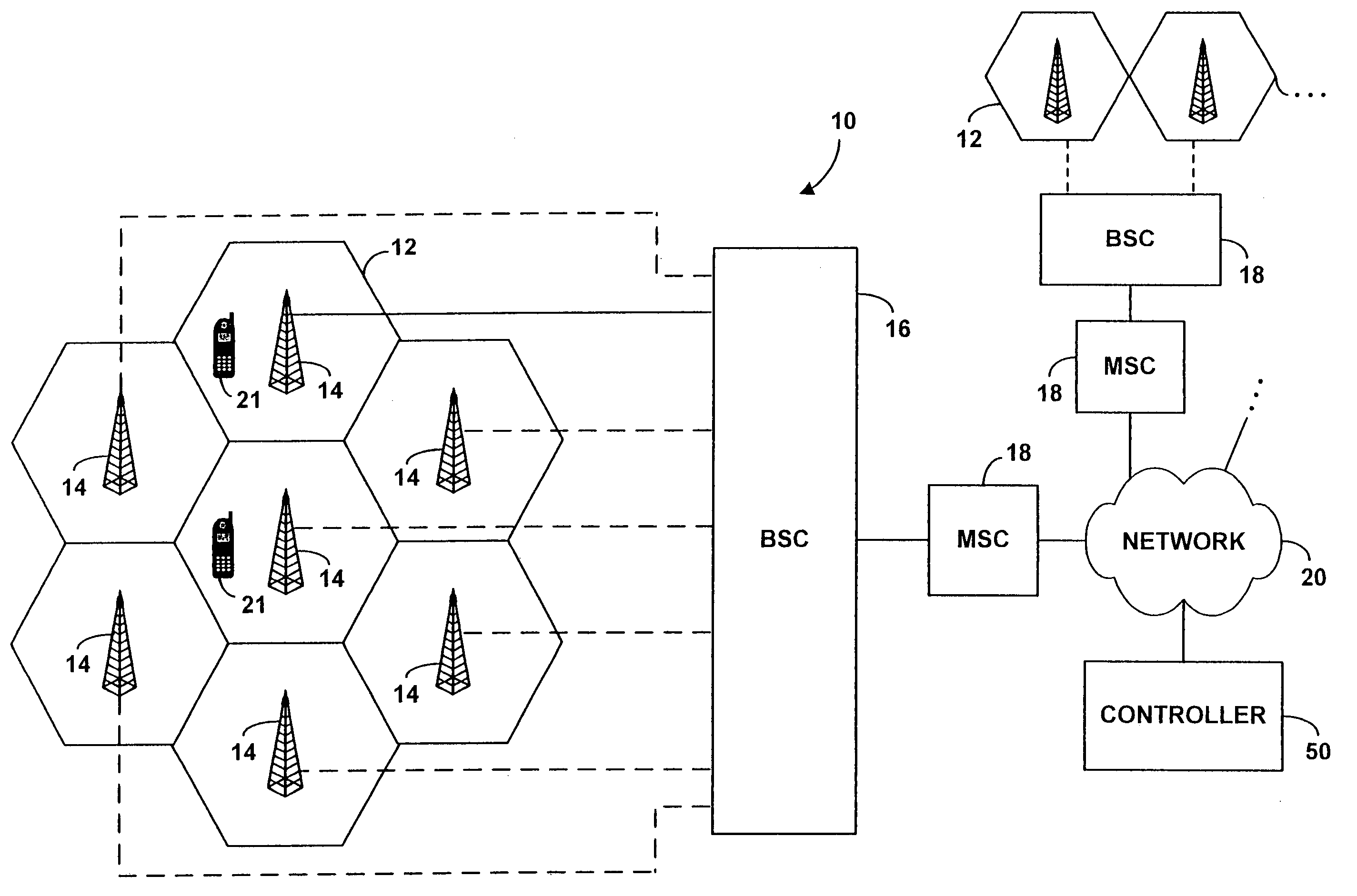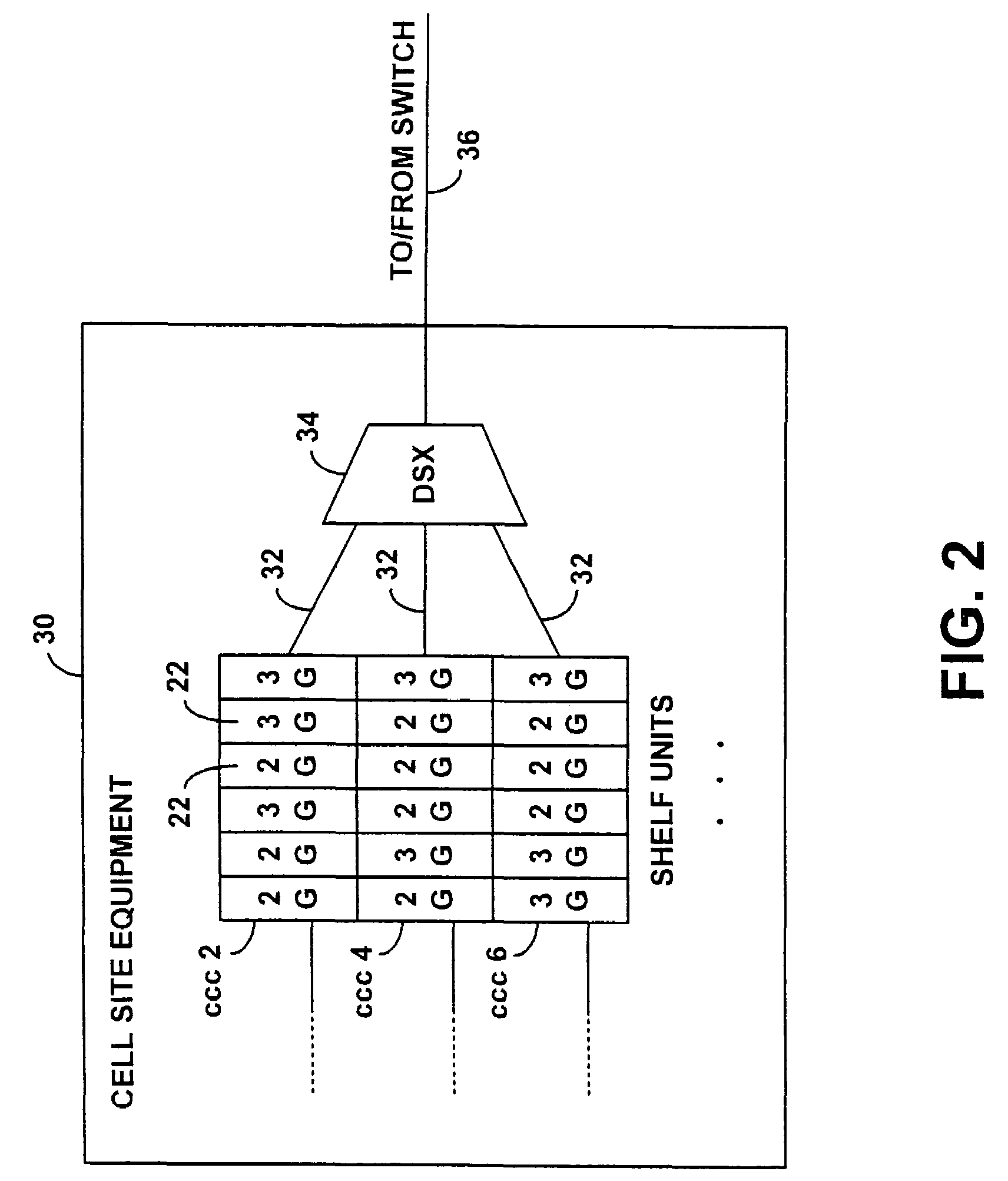Reserving channel elements to maximize utilization of resources and prevent blocking of calls
a channel element and resource technology, applied in the field of wireless communication networks and methods, can solve the problems of many sites utilizing their 3g channel elements inefficiently
- Summary
- Abstract
- Description
- Claims
- Application Information
AI Technical Summary
Benefits of technology
Problems solved by technology
Method used
Image
Examples
Embodiment Construction
[0023]Referring to the drawings, FIG. 1 illustrates a simplified block diagram of a wireless communications network 10 in which an exemplary embodiment of the present invention can be employed. The arrangements described herein are provided as examples only, and other arrangements and other elements (e.g., machines, interfaces, functions, etc.) can be used instead and some elements may be omitted altogether. Further, as in most telecommunications applications, those skilled in the art will appreciate that many of the elements described herein are functional entities that may be implemented as discrete components or in conjunction with other components, in any suitable combination and location.
[0024]As shown in FIG. 1, network 10 includes a number of cells or cell sites 12, the boundaries of which are defined by an RF radiation pattern from a respective Base Transceiver Station (BTS) antenna 14. FIG. 1 depicts each of the cells in an idealized fashion, as a hexagon that does not over...
PUM
 Login to View More
Login to View More Abstract
Description
Claims
Application Information
 Login to View More
Login to View More - R&D
- Intellectual Property
- Life Sciences
- Materials
- Tech Scout
- Unparalleled Data Quality
- Higher Quality Content
- 60% Fewer Hallucinations
Browse by: Latest US Patents, China's latest patents, Technical Efficacy Thesaurus, Application Domain, Technology Topic, Popular Technical Reports.
© 2025 PatSnap. All rights reserved.Legal|Privacy policy|Modern Slavery Act Transparency Statement|Sitemap|About US| Contact US: help@patsnap.com



